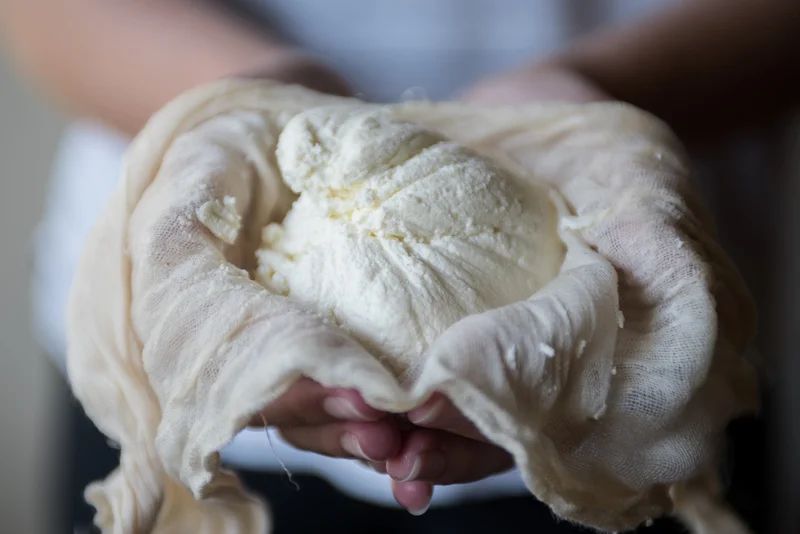Why do we assume certain foods are a challenge to make, when really they’re no more difficult to prepare than a pot of coffee? In the time it takes to create a pint of ricotta, you could have gone to and from the grocery store. Ricotta is typically made from whey, the watery byproduct of cheesemaking. But since whey can be difficult to find, we use a combination of whole milk and cream instead. This ricotta is similar to a queso fresco or paneer. It’s delicious baked into a cheesy spread, swirled into pancakes, stuffed into pasta, or just spread on bread with a little salt and olive oil or honey.
Special equipment: You will need a large nonreactive bowl, a fine-mesh strainer, butcher’s twine (optional), ultrafine woven cheesecloth, an instant-read thermometer, and a ladle.
Game plan: For drier ricotta, gather the corners of the cheesecloth and tie it into a sack with butcher’s twine. Tie the free end of the twine to a spatula or spoon handle and suspend it over a tall container with at least 1 inch of clearance from the bottom. Then refrigerate overnight.
- Yields: About 2 cups (16 ounces)
- Difficulty: Easy
- Total: 25 mins, plus draining time
Ingredients (4)
- 8 cups (half gallon) pasteurized whole milk (not ultrapasteurized)
- 1/2 cup heavy cream
- 1 teaspoon fine salt
- 1/4 cup distilled white vinegar
Instructions
- Line a large fine-mesh strainer with a double layer of ultrafine woven cheesecloth and place over a large nonreactive bowl; set aside.
- Place milk, cream, and salt in a large saucepan, set over medium heat, and heat until mixture reaches between 175°F and 180°F on an instant-read thermometer, about 5 minutes.
- Remove from heat and drizzle in vinegar while slowly and gently stirring. Stop stirring as soon as all of the vinegar has been added. Let mixture sit undisturbed while the milk solids coagulate and float to the surface, leaving the whey underneath, about 20 minutes.
- Gently ladle the solids into the strainer, leaving as much whey in the saucepan as possible; discard the whey. Let the ricotta drain, without pressing down on the curds, until most of the liquid has drained, about 1 hour.
- Remove the ricotta from the cheesecloth and store in a covered container in the refrigerator for up to 1 week.
Cover image courtesy of Shutterstock, all other photos by Chowhound.


